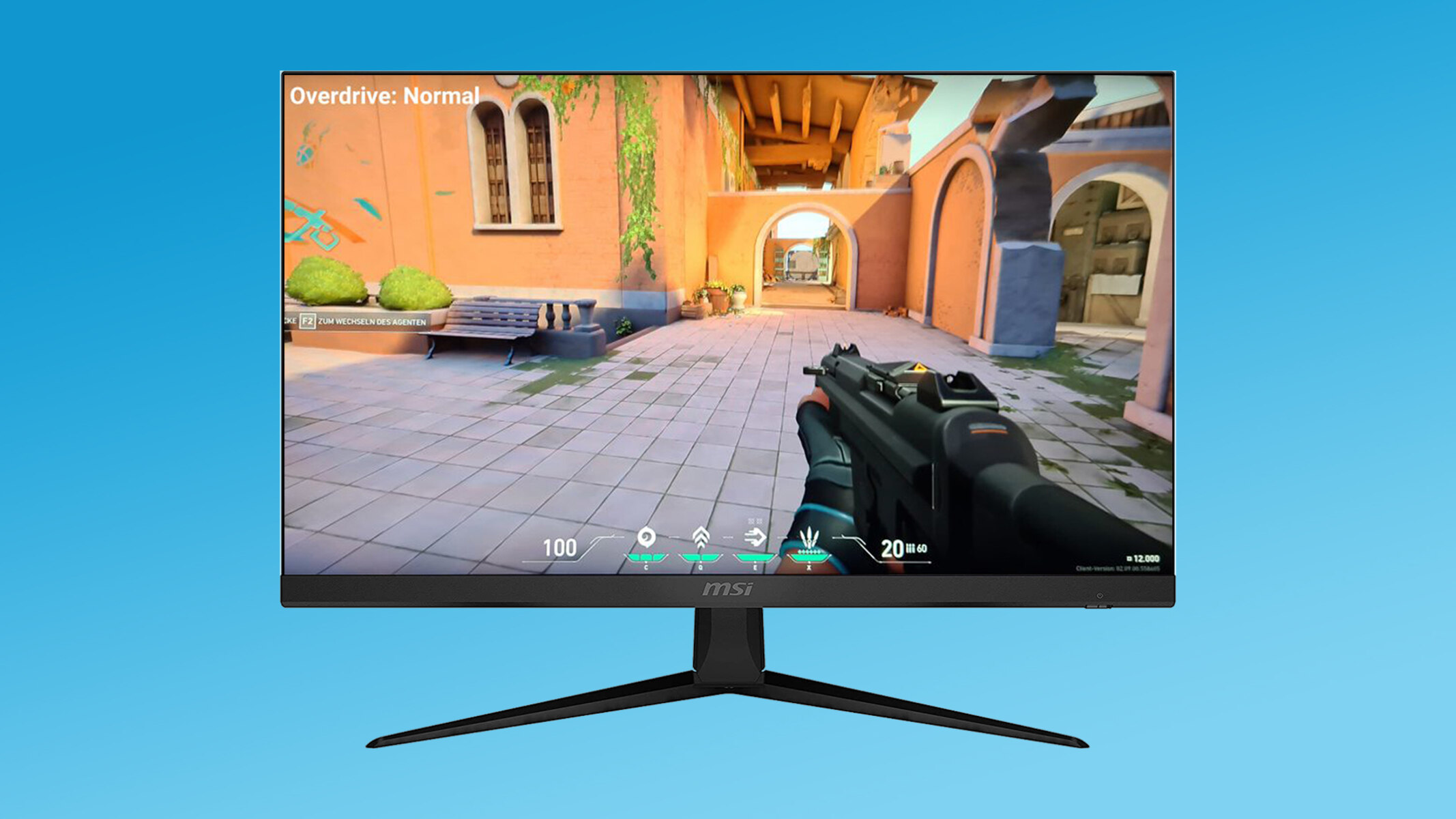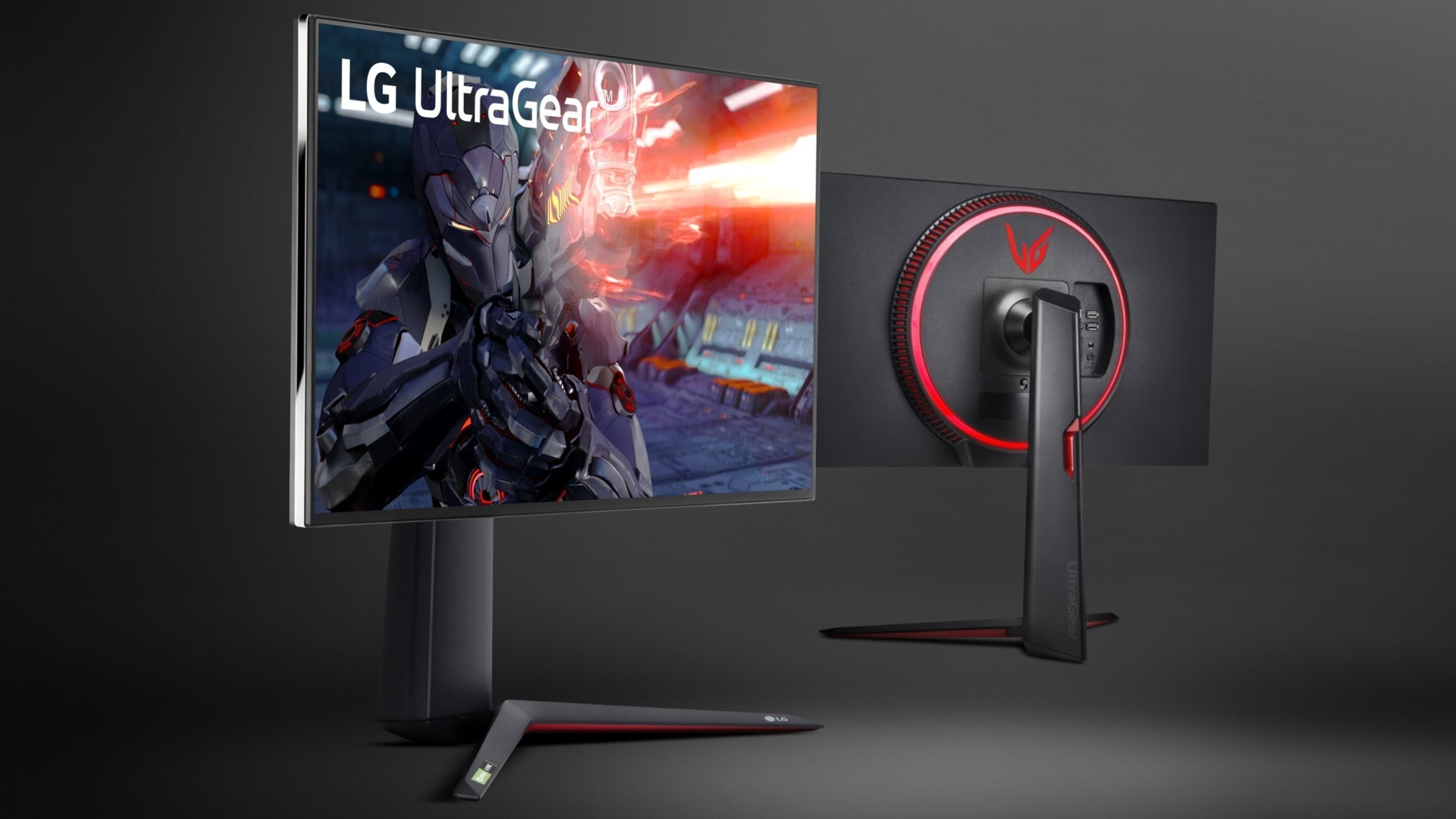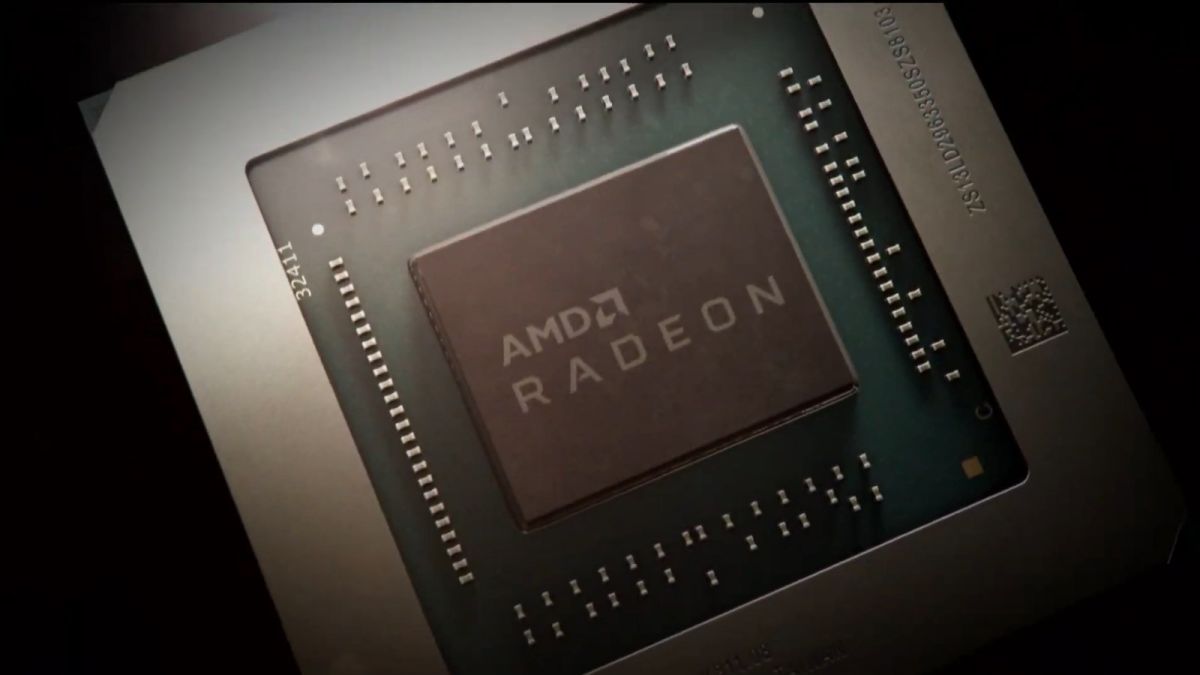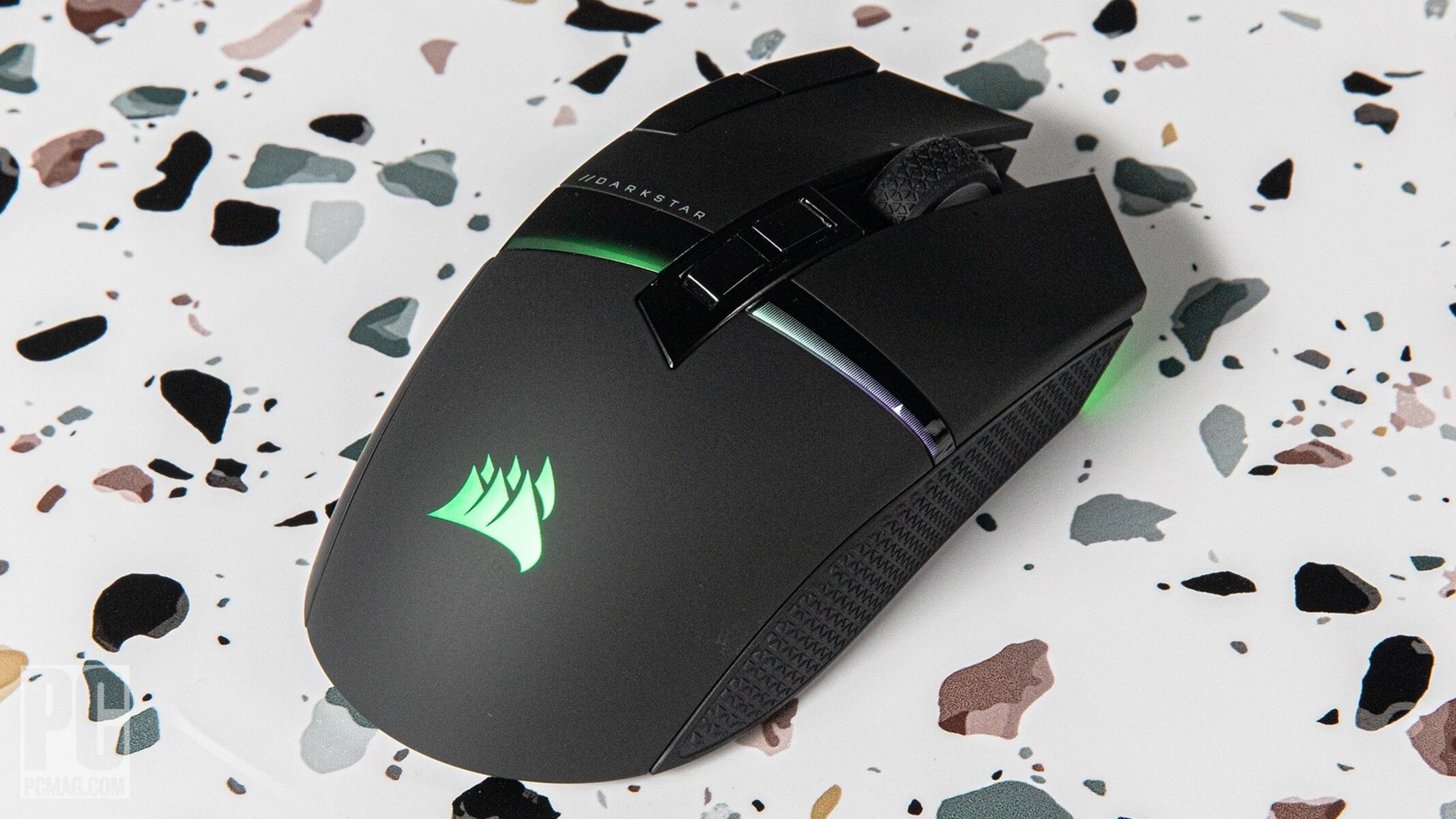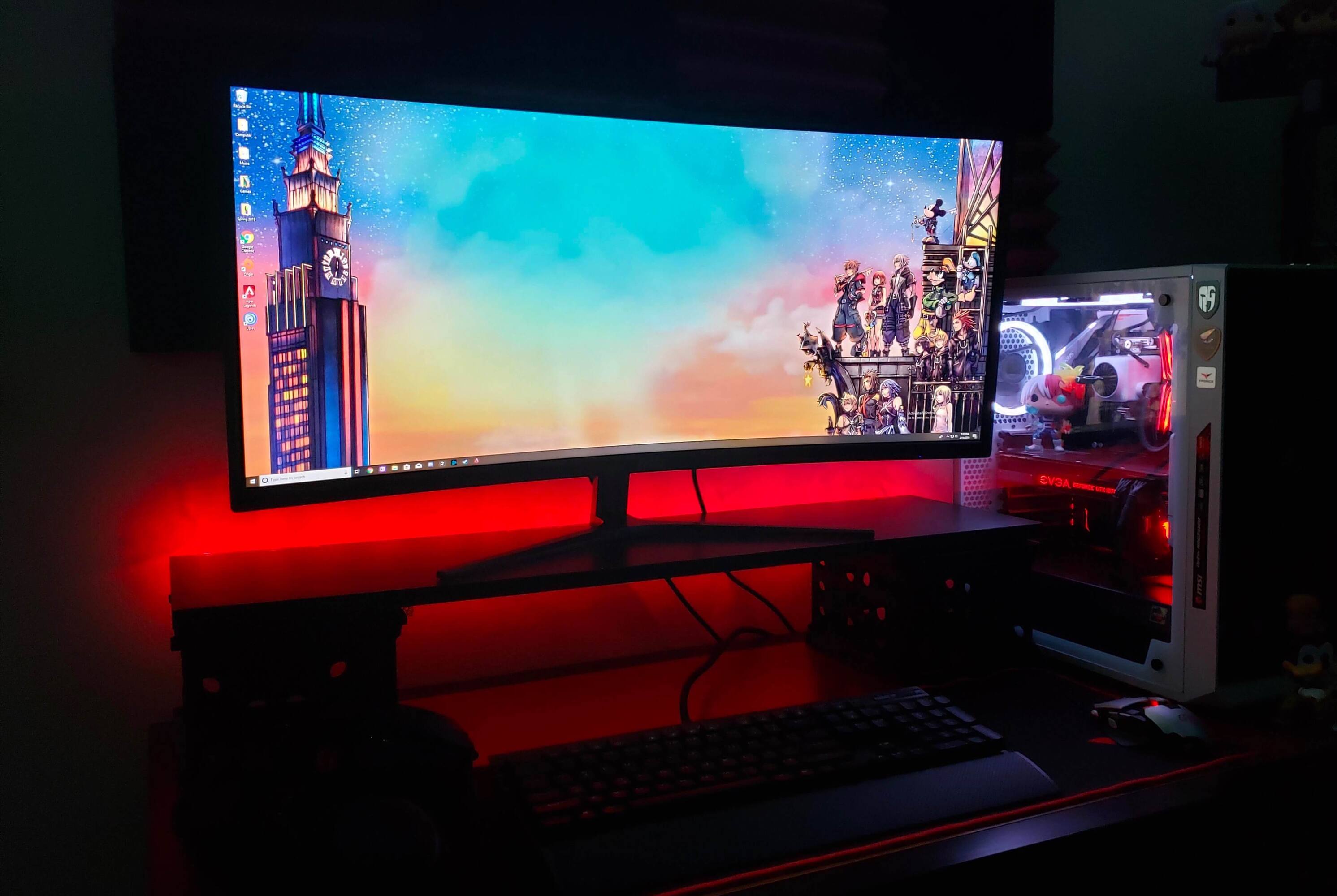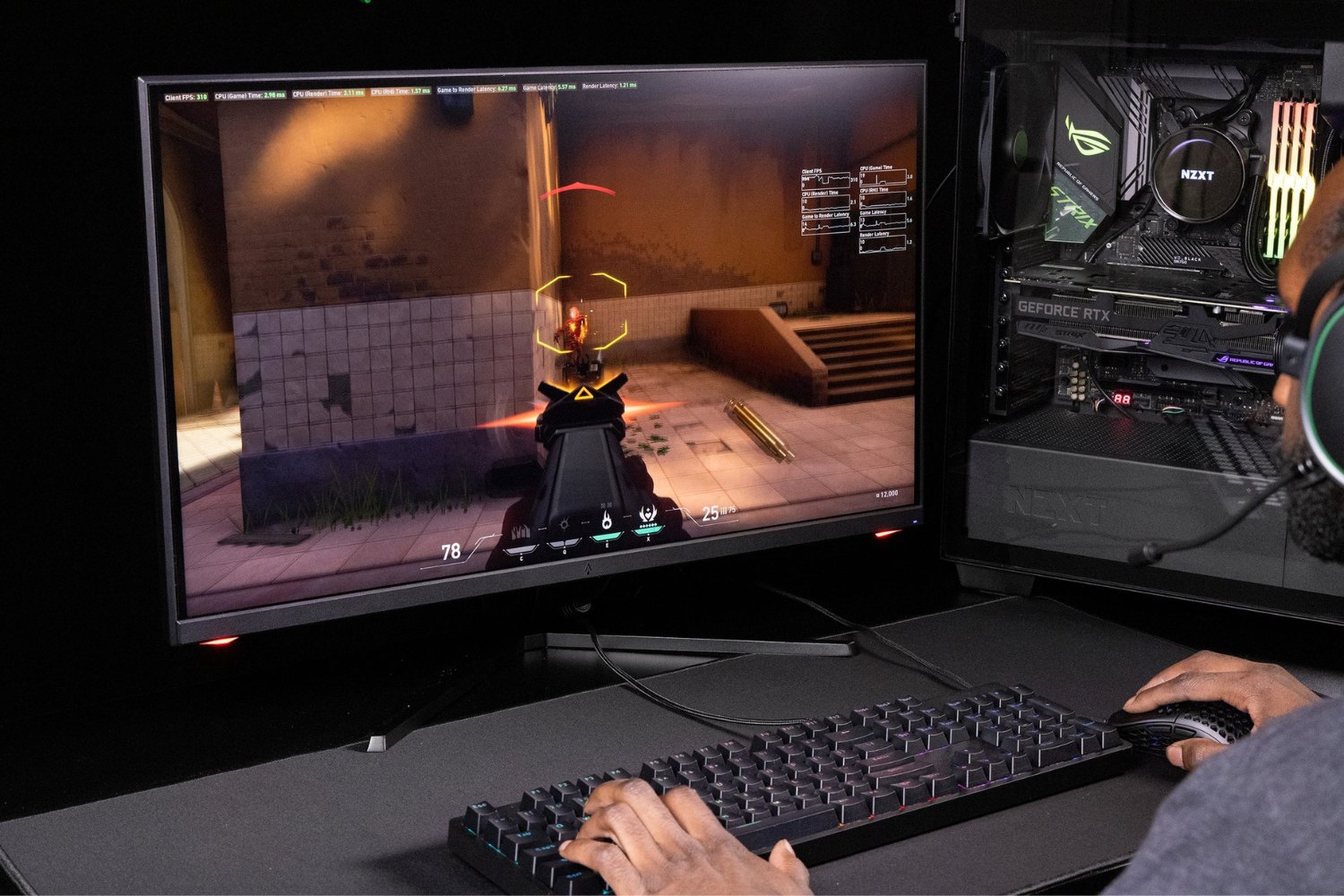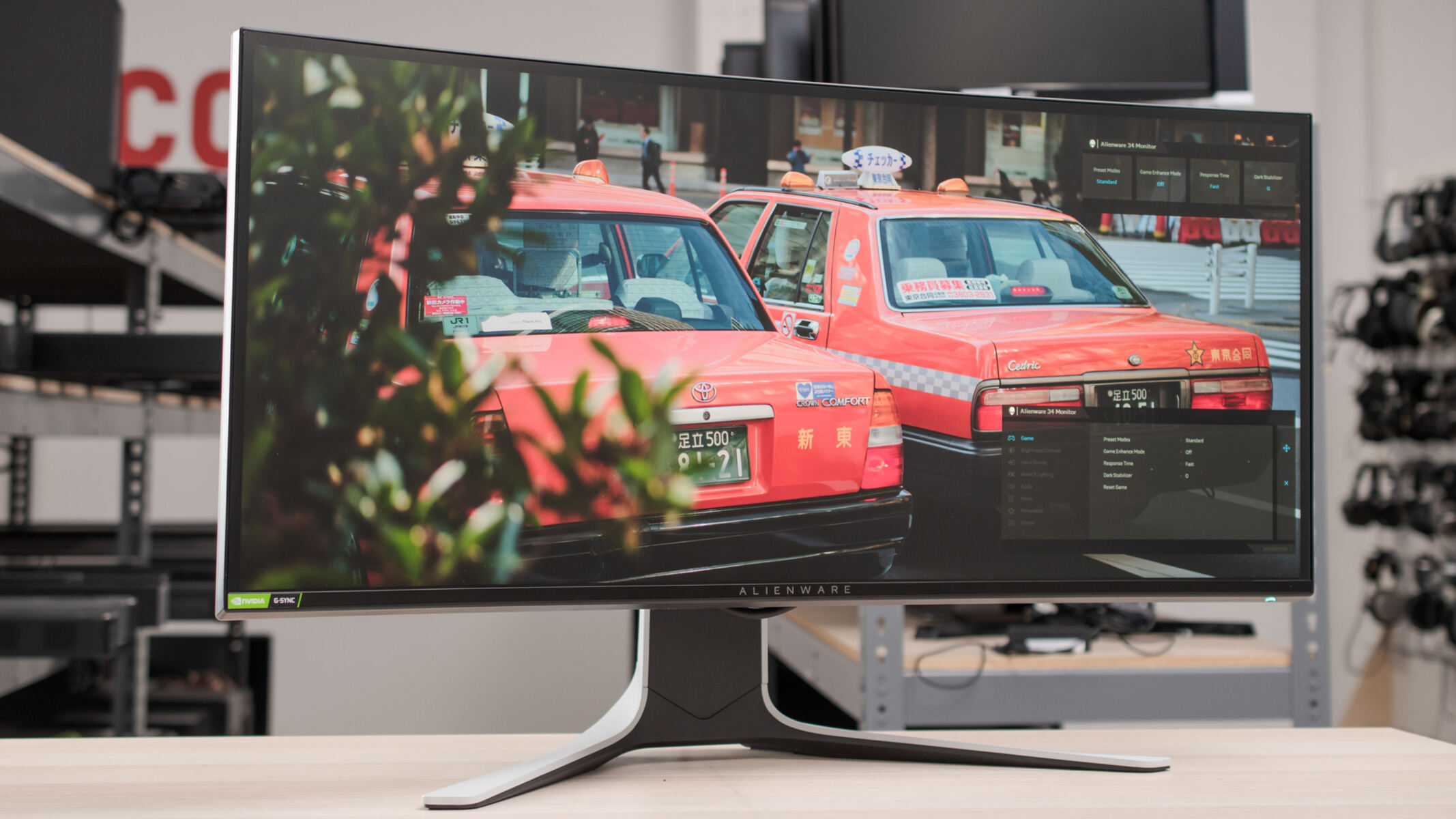Introduction
Welcome to the exciting world of gaming monitors! Gamers are always on the lookout for the latest and greatest technology to enhance their gaming experience. One of the features that has gained popularity in recent years is Overdrive. If you’re wondering what Overdrive is and how it can benefit your gaming sessions, you’ve come to the right place.
Overdrive is a technology commonly found in gaming monitors that aims to reduce motion blur and improve response times. As a result, it can enhance the overall gaming experience by providing smoother and more fluid visuals. Whether you’re into fast-paced action games or competitive eSports, Overdrive can make a noticeable difference in your gameplay.
In this article, we will delve deeper into the world of Overdrive, exploring how it works, its benefits, potential drawbacks, and some helpful tips for using it effectively.
So, if you’re ready to learn more about this feature and how it can elevate your gaming experience to new heights, let’s dive in!
What is Overdrive?
Overdrive is a feature found in gaming monitors that is designed to reduce motion blur and improve the response time of the display. With Overdrive, the pixels on the screen can transition from one color to another more rapidly, resulting in smoother and clearer moving images, especially during fast-paced gameplay.
When a pixel changes from one color to another, it takes a certain amount of time, known as the response time, to complete the transition. The response time is measured in milliseconds (ms). A lower response time means that pixel transitions happen more quickly, resulting in reduced motion blur.
Overdrive technology actively reduces the response time of the pixels by boosting the voltage sent to them, allowing for faster color transitions. By accelerating the pixel’s switching speed, Overdrive effectively minimizes the time it takes for each pixel to change color, resulting in sharper images and improved fluidity during highly dynamic scenes.
It’s important to note that Overdrive is not limited to gaming monitors. It can also be found in other display devices, such as televisions and smartphones, but its impact is particularly noticeable in gaming due to the fast-paced nature of gaming visuals.
While Overdrive can greatly enhance the gaming experience, it’s crucial to find the right balance. If Overdrive is set too high, it can introduce artifacts, commonly known as “ghosting” or “overshoot,” where pixels overshoot their intended color value, resulting in a trail or halo effect around moving objects on the screen. Conversely, if Overdrive is set too low, motion blur may still be noticeable.
In the next section, we will explore how Overdrive works and the technology behind it. Understanding the inner workings of Overdrive will help you make informed decisions when choosing and adjusting your gaming monitor settings.
How Does Overdrive Work?
Overdrive technology works by manipulating the voltage sent to the liquid crystal display (LCD) pixels in a gaming monitor. By increasing the voltage during color transitions, the response time of the pixels is reduced, resulting in faster and more accurate color changes.
When a new frame is displayed on the screen, the pixels need to transition from their current color to the new color. This transition is achieved through a process called “gating,” where the pixels are aligned correctly to show the desired color. With traditional LCD panels, the pixel transitions can sometimes take longer, leading to motion blur.
Overdrive technology addresses this issue by boosting the voltage applied to the pixels during the color transitions. By increasing the voltage, the liquid crystals within the pixels respond faster and align themselves to the new color more quickly. This results in sharper and more vivid images, with less motion blur.
However, it’s important to note that Overdrive is not a universal solution and has some limitations. Each gaming monitor has its own unique implementation of Overdrive, and the effectiveness can vary. Improper or excessive use of Overdrive can introduce artifacts, such as ghosting or overshoot, which can be distracting and negatively impact the gaming experience.
To ensure optimal performance, manufacturers often provide multiple levels of Overdrive settings for users to choose from. These settings typically include options like “Off,” “Low,” “Medium,” and “High.” The optimal setting depends on various factors, including the specific gaming monitor, the game being played, and personal preferences. Experimenting with different settings and observing the results in different scenarios can help find the right balance between reduced motion blur and minimizing artifacts.
It’s worth noting that Overdrive is typically enabled by default on most gaming monitors. However, some users may prefer to disable it or adjust the settings to suit their individual preferences. Ultimately, understanding how Overdrive works and how it interacts with your gaming monitor can empower you to make informed decisions to optimize your gaming experience.
Now that we’ve explored the inner workings of Overdrive, let’s uncover the benefits it brings to gamers in the next section.
Benefits of Overdrive
Overdrive technology offers several benefits that can greatly enhance the gaming experience for both casual and competitive gamers. Here are some of the key advantages of using Overdrive in gaming monitors:
- Reduced Motion Blur: One of the primary benefits of Overdrive is the reduction of motion blur. By accelerating pixel response times, Overdrive minimizes the persistence of previous frames, resulting in sharper and clearer images, especially during fast-paced action sequences. This can greatly enhance the overall visual experience and improve gameplay immersion.
- Improved Responsiveness: Overdrive improves the speed at which pixels change colors, ultimately reducing the input lag. Input lag refers to the delay between the time you press a button or move your mouse and when the action is displayed on the screen. By minimizing input lag, Overdrive ensures smoother and more responsive gameplay, allowing for quicker reactions and more accurate movements in games that require precision.
- Enhanced Visual Clarity: Overdrive technology helps to eliminate smearing and ghosting artifacts, commonly associated with slow response times. This results in clearer and more defined visuals, making it easier to spot enemies, track moving objects, and recognize details in fast-paced gaming environments. Whether you’re playing first-person shooters or racing games, the improved visual clarity offered by Overdrive can give you a competitive edge.
- Increased Immersion: With reduced motion blur and improved responsiveness, Overdrive enhances the overall gaming immersion. It creates a more seamless and fluid experience, making you feel more connected to the virtual world. Whether you’re exploring vast open worlds or engaging in intense battles, Overdrive can contribute to a more engaging gaming experience.
- Better Gaming Performance: By reducing motion blur and improving responsiveness, Overdrive can contribute to better gaming performance. In competitive gaming, where split-second decisions and precise movements are crucial, the advantages provided by Overdrive can make a substantial difference. It can help you react faster, track targets more accurately, and ultimately improve your overall gaming performance.
Overall, Overdrive technology plays a significant role in enhancing the visual clarity, responsiveness, and immersion of gaming monitors. The benefits it offers make it an essential feature for gamers looking to elevate their gaming experience to new levels.
While Overdrive brings numerous advantages, it’s important to be aware of potential drawbacks as well. In the following section, we will discuss some of the potential downsides of using Overdrive and provide tips for utilizing it effectively.
Potential Drawbacks of Overdrive
While Overdrive technology offers significant benefits in terms of reducing motion blur and improving responsiveness, there are also some potential drawbacks to consider. Here are a few potential limitations of using Overdrive in gaming monitors:
- Artifacts: One of the main drawbacks of Overdrive is the possibility of introducing visual artifacts. When Overdrive is set too high, it can cause ghosting or overshoot, where pixels transition past their intended color value and then quickly snap back, creating a trailing or halo effect around moving objects. These artifacts can be distracting and negatively impact the overall visual quality. It’s important to find the right balance and choose the appropriate Overdrive setting to minimize artifacts.
- Inconsistent Performance: Overdrive effectiveness can vary across different gaming monitor models and even among different levels of the same monitor model. Not all monitors handle Overdrive equally well, and some may introduce more artifacts than others. Additionally, the effectiveness of Overdrive can vary based on the refresh rate and resolution of the monitor. It’s essential to do research and read user reviews to understand how well a specific monitor’s Overdrive performs before making a purchase decision.
- Color Accuracy: Another potential drawback of Overdrive is the impact it can have on color accuracy. When Overdrive is enabled, the pixels transition more quickly, which can result in slightly less accurate color reproduction. However, modern gaming monitors usually offer various Overdrive settings, allowing users to find a balance between reduced motion blur and maintaining acceptable color accuracy.
- Power Consumption: Overdrive technology typically requires more power to operate, as it involves increasing the voltage supplied to the pixels. While the difference may not be significant, it’s something to consider if energy efficiency is a priority for you. The increased power consumption may have a minor impact on operating costs or battery life for portable gaming devices.
- Heat Generation: The increased voltage used for Overdrive can generate additional heat within the monitor. While this heat generation is typically minimal, it’s still worth considering if you are in an environment where cooling is a concern, or if you have a monitor with poor thermal management.
While these potential drawbacks of Overdrive should be taken into account, it’s important to note that not all gaming monitors and Overdrive implementations will exhibit these limitations. The effectiveness of Overdrive as a feature will vary depending on the specific monitor model and the settings chosen.
Now that we’ve explored the potential drawbacks of Overdrive, let’s move on to some tips for using Overdrive effectively in the next section.
Tips for Using Overdrive
To make the most of the Overdrive feature in your gaming monitor and strike the right balance between reduced motion blur and artifacts, here are some helpful tips:
- Experiment with Different Settings: Gaming monitors often provide multiple Overdrive settings for users to choose from. Take the time to experiment with different settings, such as “Off,” “Low,” “Medium,” and “High.” Test each setting with different games and observe the impact it has on motion blur and artifacts. Finding the optimal setting is a matter of personal preference and the specific characteristics of your monitor.
- Consider the Refresh Rate: The refresh rate of your gaming monitor is an important factor to consider when adjusting Overdrive settings. Higher refresh rates typically require faster pixel response times to reduce motion blur effectively. If your monitor has a high refresh rate, you may need to increase the Overdrive setting to match the display’s capabilities.
- Read User Reviews: Before purchasing a gaming monitor, research user reviews for the specific model you are considering. Look for information about Overdrive performance, including feedback on motion blur reduction and the presence of artifacts. Learning from the experiences of other users can help you make an informed decision and avoid potential issues.
- Avoid Extreme Overdrive Settings: While higher Overdrive settings can reduce motion blur, they also increase the risk of introducing artifacts. Avoid using the highest Overdrive setting unless necessary, as it can significantly impact the overall visual quality. Aim for a setting that provides a good balance between reduced motion blur and minimal artifacts.
- Adjust Other Display Settings: Overdrive should not be the only setting you adjust on your gaming monitor. Consider calibrating other display settings, such as brightness, contrast, and color saturation, to ensure a balanced and accurate visual output. Proper calibration can complement the benefits of Overdrive and enhance the overall gaming experience.
- Regularly Update Monitor Firmware: Manufacturers may release firmware updates for gaming monitors that can improve the performance and stability of Overdrive. Stay informed about firmware updates for your specific monitor model and apply them as recommended. These updates may address known issues or introduce optimizations that enhance the effectiveness of Overdrive.
By following these tips, you can optimize your Overdrive settings, reduce motion blur, and minimize artifacts, resulting in a more enjoyable and visually immersive gaming experience.
Now that we’ve covered the benefits, potential drawbacks, and helpful tips for using Overdrive, let’s wrap up this article by summarizing the key points and emphasizing the importance of finding the right Overdrive settings for your gaming monitor.
Conclusion
Overdrive is a valuable feature found in gaming monitors that can greatly enhance the gaming experience. By reducing motion blur, improving responsiveness, and enhancing visual clarity, Overdrive technology allows gamers to enjoy smoother and more immersive gameplay.
While Overdrive offers numerous benefits, it’s important to be aware of potential drawbacks such as artifacts, inconsistent performance across different monitor models, and the impact on color accuracy. By understanding these limitations and following the tips provided, gamers can optimize their Overdrive settings to strike the right balance between reduced motion blur and minimal artifacts.
When utilizing Overdrive, it’s crucial to experiment with different settings, consider the refresh rate of your monitor, read user reviews, and adjust other display settings for optimal performance. Regularly updating your monitor firmware can also enhance the effectiveness of Overdrive and ensure a seamless gaming experience.
In the end, finding the right Overdrive settings for your specific gaming monitor model and personal preferences is key. It may take some trial and error, but once you’ve achieved the optimal balance, you’ll be rewarded with improved visual clarity, responsiveness, and immersion in your gaming sessions.
So, whether you’re an avid gamer seeking competitive advantage or a casual gamer looking for a more immersive experience, consider leveraging Overdrive technology to elevate your gaming to new heights. Embrace the benefits, manage the potential drawbacks, and enjoy the enhanced visual experience that Overdrive can bring to your gaming world.







